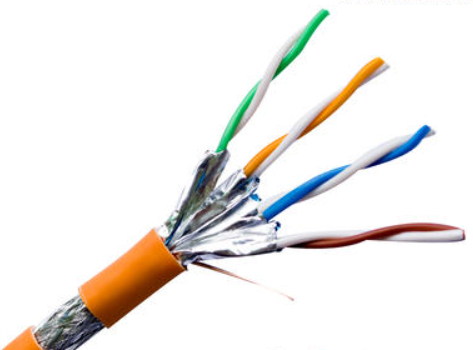
What is the Purpose of An RJ45 Connector?
In the vast landscape of network cable technology, the RJ45 connector still stands as a ubiquitous component that plays a crucial role in establishing reliable connections.
This small yet powerful connector has revolutionized the way we transmit data, making it an integral part of Ethernet networks. In this article, we will delve into the depths of the RJ45 connector, exploring its purpose, size variations, compatibility, and the tools required for working with it.
This small yet powerful connector has revolutionized the way we transmit data, making it an integral part of Ethernet networks. In this article, we will delve into the depths of the RJ45 connector, exploring its purpose, size variations, compatibility, and the tools required for working with it.
What is An RJ45 Connector?
The RJ45 connector, short for Registered Jack 45, is a standardized connector used for terminating network cables. It features eight pins arranged in a modular plug, specifically designed to connect twisted pair cables.
Its sturdy plastic housing ensures the pins maintain a secure connection, while the gold-plated contacts provide reliable conductivity.
Its sturdy plastic housing ensures the pins maintain a secure connection, while the gold-plated contacts provide reliable conductivity.
What is the Purpose of An RJ45 Connector?
The primary purpose of an RJ45 connector is to establish a physical connection between network devices. It allows for the transmission of data signals, enabling devices to communicate within a network.
RJ45 connectors are commonly used in Ethernet networks, connecting computers, routers, switches, and other network equipment.
Are All RJ45 Connectors the Same Size?
While RJ45 connectors adhere to a standard pin configuration, there are different sizes available to accommodate various cable types. The most common RJ45 connector size is known as 8P8C (8 positions, 8 contacts), which is widely used for Ethernet connections.
However, other sizes like 6P6C and 4P4C exist for specific applications such as telephone connections or serial communication. It is crucial to use the correct size to ensure compatibility and reliable connectivity.
Can I Use an RJ45 Connector for Both Ethernet and Telephone Connections?
Although RJ45 connectors are primarily associated with Ethernet connections, they can also be used for telephone connections, depending on the wiring scheme.
However, it is important to note that the pin configuration and wiring requirements differ for Ethernet and telephone connections. Utilizing the appropriate wiring scheme and adhering to the respective standards is essential for proper functionality.
Are There Specific Tools Required for Working With RJ45 Connectors?
Working with RJ45 connectors requires a few essential tools to ensure precise and reliable connections. The following tools are commonly used:
●Crimping Tool
This tool is used to attach the RJ45 connector to the network cable. It aids in securing the connector and the cable conductors together, ensuring a robust connection.
●Cable Stripper
To expose the inner conductors of the network cable, a cable stripper is used. It carefully removes the outer insulation without damaging the wires.
●Cable Tester
A cable tester helps verify the integrity of the network cable by checking for any continuity issues, open circuits, or short circuits. It ensures that the RJ45 connector has been properly installed and that the cable is functioning correctly.
Conclusion
The RJ45 connector serves as the backbone of modern network infrastructure, facilitating seamless communication between devices. Its standardized design, coupled with various sizes to cater to different applications, has made it a vital component in the world of network cables.
While versatile enough to support both Ethernet and telephone connections, it is important to understand the distinctions and adhere to the appropriate standards. Equipping oneself with the necessary tools enables efficient installation and maintenance of RJ45 connectors, ensuring optimal network performance.
While versatile enough to support both Ethernet and telephone connections, it is important to understand the distinctions and adhere to the appropriate standards. Equipping oneself with the necessary tools enables efficient installation and maintenance of RJ45 connectors, ensuring optimal network performance.







Leave a comment